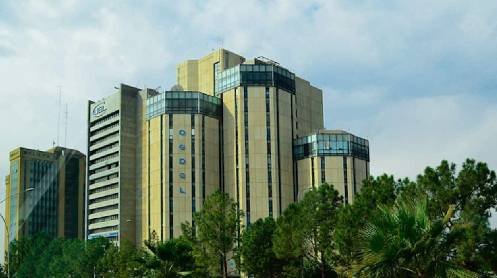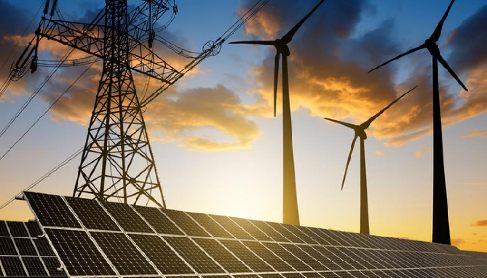The country’s economic managers are claiming that the economy is now at a sustainable growth trajectory and a post Covid pandemic turnaround stands well and truly achieved. Well, to be honest they have a fair point, as exports are growing and corporate turnovers and profits results are depicting perhaps some historically best numbers.
The recent financial figures from almost all LSM sectors have been robust and a few turnover transformations have been absolutely amazing. For example, only in last week’s reporting, I was reading that Attock Refinery, from being a PKR90 billion (6 months) company has posted revenues of around PKR 160 billion in the last 6 months’ accounts ending; the list goes on. Now, some may argue that given the prevailing inflation levels in Pakistan a part of such growth was expected, but in all fairness, these recent numbers go much beyond the mere inflationary gains.
Having said this, one does realise that other than the obvious fallouts from inflation, it does indeed carry some flip benefits as well that amongst other things mainly entails a corporate growth push and pushing of previous red operational data into the black category, thereby suddenly turning a section of closed businesses into viable operations. With an over devalued Pak Rupee and the real inflation much higher than reflected in the government’s statistics, one conceded that some of these market gains are not totally unexpected. Whether or not they are sustainable and purely of a positive nature is another debate and perhaps requires more of a deep dive in each sector or as they say, scratching of the surface to see what really lies underneath!
These are strange times where due to more than two years of a lethal pandemic (both, medically & economically) and now a Russian-Ukrainian war, economic managers need to be aware that this unique situation demands a new growth normal and more importantly, the very short-term outlook on the earlier perceived growth benchmarks also requires a tangible reset. Global inflation in recent times (for more than 5 decades to be precise) has never been higher—the US and the UK clocking in at around 8 percent, the EU in excess of 11 percent now, leading Asian economies at around the 7 percent mark, and developing countries like Pakistan between 12 to 15 percent—and it is in this context that today’s debate by the economic managers is not about how simply to grow an economy, but to grow it in a way and at a (deliberately controlled) pace that in essence protects its citizens from high inflation and prevents their disposable incomes from being eroded.
China for example, has consciously announced that it does not want to grow more than 5.50 percent in 2022-23 (they have been growing in double digits for a long time) and likewise, many EU countries have of late shifted focus from growth to instead supplementing basic wages, benefits and hand-outs. Today, almost all prudent economies, even if they have strong foreign exchange reserves or surpluses, are endeavouring to limit growth and resort predominantly to indigenous production rather than a one linked with imports.
Ironically, Pakistan’s recent growth push seems to be primarily import based despite already having serious external account challenges. The automobile and motorcycle sectors are growing at a rate of more than 30 percent, but deletion either remains low in some companies or simply non-existent in others, especially of the recent entrants. The FMCG sector, which is growing at almost 20 percent, has an imported cost component of around 40 percent. Pharmaceuticals is no different and the energy sector comes across as being the main culprit where while oil and gas prices rises are beyond one’s control, but one finds the increase in the imported coal’s footprint in our overall coal consumption to produce coal-based energy, a bit baffling.
In contrast, both China and India have not only increased their targeted usage (2022-23) of coal in their overall mix of energy production by almost 5–10 percent, but also at the same time are looking to reduce their coal imports by around 10–15 percent for the same period. As for the automobile sector in both countries, again, not only do the respective deletion levels stand at almost 80 percent or more, some very interesting automobile export numbers mean that the sector turns out to be a valuable foreign exchange earner.
We seem to be swimming against the tide here: Not only are we looking to indiscriminately grow our GDP, but do so by way of mounting imports. Unfortunately, Pakistan’s external account deficits are reaching an unsustainable or an unserviceable proportion and one genuinely fears if the history from the 2012-17 seems to be repeating itself? Only this time, the danger is that any subsequent currency devaluations will simply break the (proverbial) camel’s back pushing the average Pakistanis in complete isolation and on the brink of revolt.
So what is the likely way forward? Ideally, the Prime Minister’s hasty announcements on fuel and energy prices and on tax breaks and amnesty should have waited till after the current IMF review in progress. Regardless of what the government functionaries may say about these announcements not clashing in any way with Fund’s directives, arguing that it is essentially the fiscal deficit that the Fund is most interested in and that this new layout is just an adjustment from an earlier provisioned allocation, the reality is that these largely political largesse could potentially be a deal breaker.
And even the Fund’s objection aside, the fundamental question that arises here is that if tax amnesties are indeed required on an almost annual basis, then perhaps it is better to accept that there is in fact something very wrong with the way our present overall national taxation framework is structured. Meaning, the right way forward is not announcing repeated tax amnesties, but instead ringing the right tax and FBR reforms. And to start with the government will do well to undertake the long pending taxation reforms and in a way that the FBR becomes transparent, accountable and moulds itself into an institution that lends confidence to the taxpayer instead of striking fear in his heart: A well-structured board with the right diversity amongst its members would be a good point to start here.
Further, now that the growth trajectory is back in the economy, this would be a good time to reflect on how we would like to grow from here on, say for the next 5 years. As pointed out a number of times, there is no need to reinvent the wheel and emulate comparable success stories. A good story to copy would be Bangladesh (Yale Professor Mushfiq Mobarak’s analytical work in this regard is extremely pertinent) where of late, a mixture of the following three policies have yielded noteworthy results: a) Induction of women into the mainstream workforce, b) Proactively partnering with the private sector to innovatively unleash synergies in unleashing government’s effective delivery outreach, which otherwise could not have been possible, and c) Keep the currency stable by focusing on exports by way of restricting any incentivisation through domestic facilitation, as local currency is always in the central bank’s control, whereas, foreign currency is not.
If one recalls, China’s and in some ways even India’s strategies for export growth have also been quite similar in that a tale of stable currencies, but some toxic domestic loans (from state-controlled banks) to deliberately spur competitiveness in domestic manufacturing.
On a different scale, the western vision has been no different; we all know the level of debt in the US economy, but the little concern on it as its underlying instrument, the USD, is in Federal Reserve’s control. It would be pertinent to point out here that the importance of managing our external account is likely to become more and more challenging in the coming days as foreign remittances come under increasing pressure in the coming year. Already, we saw a month-on-month decline in February and on a regional level, the reduction of home remittances is already becoming evident from late last year onwards with India having lost nearly 10 percent and Sri Lanka as much as 15 percent. Elsewhere in Asia, the same dip is also quite evident by now, where countries like the Philippines and Indonesia have already lost nearly 12 percent of their usual remittance inflows.
Finally, last but not least, the government needs to clearly define its industrial policy: What sort of industry would it like to encourage in Pakistan? Will every type of FDI be welcome or only the one that brings in more foreign exchange inflows than outflows will be allowed? Do we want to return to the industrial policies from the 60s, where the cornerstone was always an equitable spread of investment/industries across the country especially under developed areas, rather than allowing an unhealthy concentration in already developed areas or large urban centres, something that in-turn has over the years also led to an undesirable spree of urbanisation since the late 80s!





